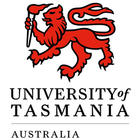Diploma of Arts
- Posted by University of Tasmania (UTAS)
- Home
- Courses
- University of Tasmania (UTAS)
- Diploma of Arts
Diploma of Arts
The Diploma of Arts provides you with opportunities to interpret human culture and behaviour from different perspectives and periods; to explore today’s big questions and learn how to support the social and economic development of the human race; and/or to be immersed in creativity, performance and innovation. The award is…
Categories
COURSE DESCRIPTION
The Diploma of Arts provides you with opportunities to interpret human culture and behaviour from different perspectives and periods; to explore today’s big questions and learn how to support the social and economic development of the human race; and/or to be immersed in creativity, performance and innovation.
The award is designed to allow you to choose your path: it can be the first year of your Bachelor of Arts study, or you may enrol in this degree to pursue your passion and undertake one of the majors in the BA, or if you decide you would like to extend your curiosity and try units from a number of disciplines. The Diploma of Arts gives you the flexibility to choose from a wide range of subjects with over twenty named majors and minors, you can select subjects to build your knowledge, and electives to enhance your skills.
Majors
- Ancient Civilizations
- Ancient Languages
- Art and Curatorial Practices
- Chinese
- Creative Arts and Health
- Criminology
- Education
- English and Writing
- French
- Gender and Diversity
- Geography and Environment
- German
- History
- Indonesian
- International Relations
- Japanese
- Media and Communication
- Music and Context
- Philosophy
- Politics and Policy
- Psychological Science
- Sociology
- Theatre and Performance.
Learning Outcomes:
1 Use general and technical knowledge from disciplines in the Bachelor of Arts to identify and reflect on social, cultural, political, ethical or environmental issues in local, cross-cultural and/or global contexts and their impacts
2 Communicate by written, oral and technology supported modes to specialist and non-specialist audiences.
3 Define and solve problems applying knowledge and technical skills as a basis for decision-making and planning
4 Apply disciplinary knowledge and skills to demonstrate initiative, resilience, accountability, and social responsibility; whether working independently or in collaboration with others.
REQUIREMENTS
Admission to undergraduate courses at the University of Tasmania requires the completion of qualifications equivalent to a 12th year of education in Australia.
IELTS (Academic) – 6.0 (no individual band less than 5.5)
TOEFL (iBT) 72 (no skill below: Reading 10; Listening 9; Speaking 16; Writing 19)
PTE Academic 50 with no score lower than 42
UTAS Access-English Level 6 – 60% (no individual score less than 55%)
Cambridge CAE (Certificate of Advanced English) – B Grade
Cambridge CPE (Certificate of Proficiency in English) – C Grade
Cambridge BEC (Business English Certificate) Higher – C Grade.
EDUCATIONAL INSTITUTION
The University of Tasmania was officially founded on 1st January 1890 and is located at Sandy Bay, Tasmania. In addition to the main campus at Sandy Bay, it also operates out of the Newnham Campus and the Cradle Coast Campus. The most popular courses offered are the environmental studies that include wilderness management, marine sciences and indigenous studies in Tasmanian literature. Other unconventional courses include agriculture development, studies on the community and population and ocean study programs. The university also comprises of a Music Conservatorium, Art school and a School of Clinical studies.
The University of Tasmania was officially founded on 1st January 1890 and is located at Sandy Bay, Tasmania. In addition to the main campus at Sandy Bay, it also operates out of the Newnham Campus and the Cradle Coast Campus. The most popular courses offered are the environmental studies that include wilderness management, marine sciences and indigenous studies in Tasmanian literature. Other unconventional courses include agriculture development, studies on the community and population and ocean study programs. The university also comprises of a Music Conservatorium, Art school and a School of Clinical studies.




